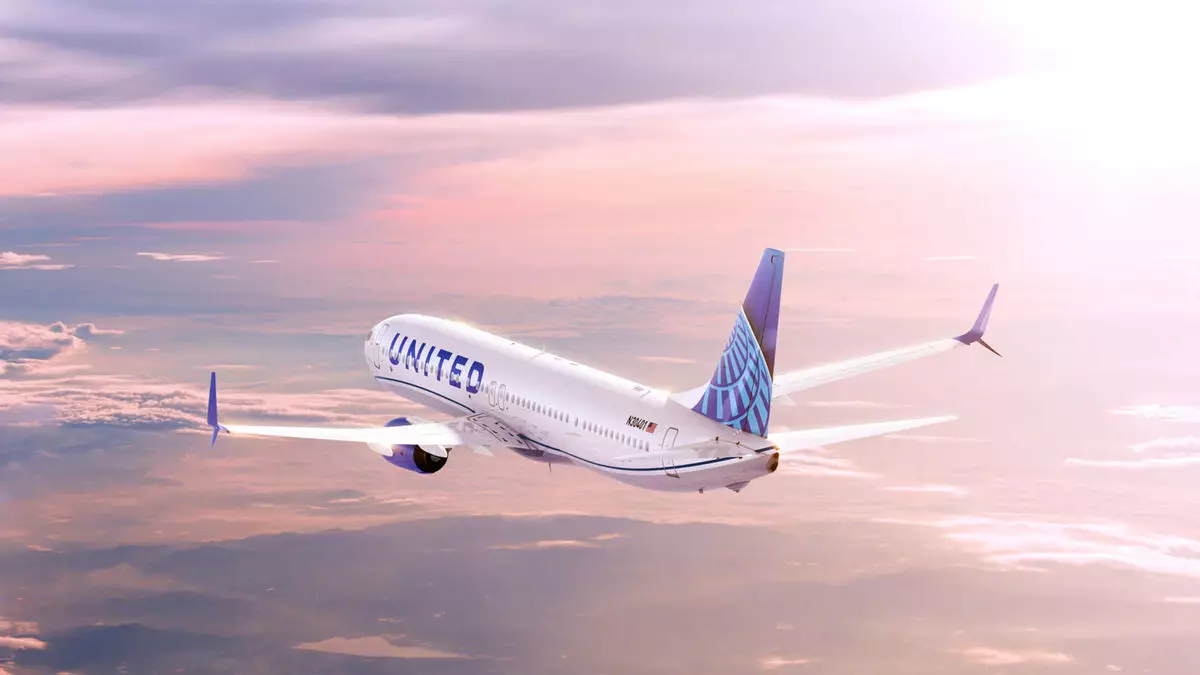As United Airlines stands at the doorstep of the May 7 launch of the Real ID enforcement at TSA security checkpoints, concerns loom large. Andrew Nocella, United’s chief commercial officer, voiced apprehensions during the airline’s Q1 earnings call, suggesting an extension of the enforcement date might be beneficial. This call for a delay reflects a significant worry: the potential for customer disruption that could adversely affect a key revenue stream. With Nocella acknowledging the challenges of travelers presenting the proper identification, the airline appears to brace for a certain turbulence in passenger flow, reminiscent of past hurdles in aviation.
The announcement from the TSA that they will not adopt a phased approach to the Real ID enforcement initiative has raised eyebrows. Approximately 81% of travelers currently present compliant forms of ID at checkpoints such as a Real ID, passport, or documentation linked to trusted traveler programs. However, the other 19%—those disqualified due to improper identification—could suffer hefty consequences, including intense scrutiny or outright refusal of embarkation. In an age where travel is laden with regulations, Nocella’s remarks resonate. With the threat of additional delays, the industry could witness echoes of pandemic-era struggles, thrusting airlines back into crisis mode as they navigate fluctuating demand.
International Versus Domestic: The Demand Paradox
While international sales appear strong relative to the domestic market, recent figures lay bare the challenges United Airlines faces. Nocella revealed a downturn in originating bookings from both Canada and Europe, down 9% and 6%, respectively. However, the silver lining resides in the robust demand for U.S.-origin international flights, which dominate about 80% of United’s international bookings. The air travel industry often seems to mirror the economic landscape, and currently, demand for Asian routes remains steadfast amidst the chaos.
Yet this international stability comes at a cost. United must grapple with weak demand domestically, particularly for main cabin seats. The airline’s decision to reduce domestic flights by 4% in the upcoming quarter emerges as a calculated response to perceived weaknesses in the domestic travel market—which mirrors larger industry trends. Rising inflation and ongoing health concerns weigh heavily on Americans’ willingness to travel. The decrease primarily targets early morning and late evening operations, suggesting a strategic focus on demand and passenger behavior patterns.
Strategies for Survival: Adjusting to Changing Market Dynamics
In the face of challenges, United Airlines is taking proactive measures. To adapt to the declining domestic demand, they plan to augment inventory for basic economy tickets. This strategy reflects a broader understanding of market dynamics; United is catering to both budget-conscious travelers and those seeking more affordable options with fewer frills. Adjusting these fare types could ultimately ameliorate the dip in load factor—now at 80.3% for Q1—but this approach is not without its implications.
The airline anticipates a modest decrease of just one percentage point in its domestic load factor for Q2, attributed to its volume of basic fares. Nonetheless, this ambitious maneuver raises the question: is this merely a band-aid solution? With a reduction in high-margin main cabin seats, the economic sustainability of such an approach remains to be seen. Will a leaner fare structure hold up against inflationary pressures and maintain customer loyalty, or will it entrench a race to the bottom in pricing wars among airlines?
The interplay of Real ID enforcement, fluctuating demand, and strategic shifts blurs the line between optimism and skepticism for United Airlines. While international markets hold promise, the domestic struggles cannot be overlooked. As airlines navigate this changing environment, the focus must remain on balancing customer experience with operational efficacy. As for future transformations in the aviation landscape, only time will tell if these measures will yield a fruitful outcome or if more turbulence awaits the skies ahead.


Leave a Reply